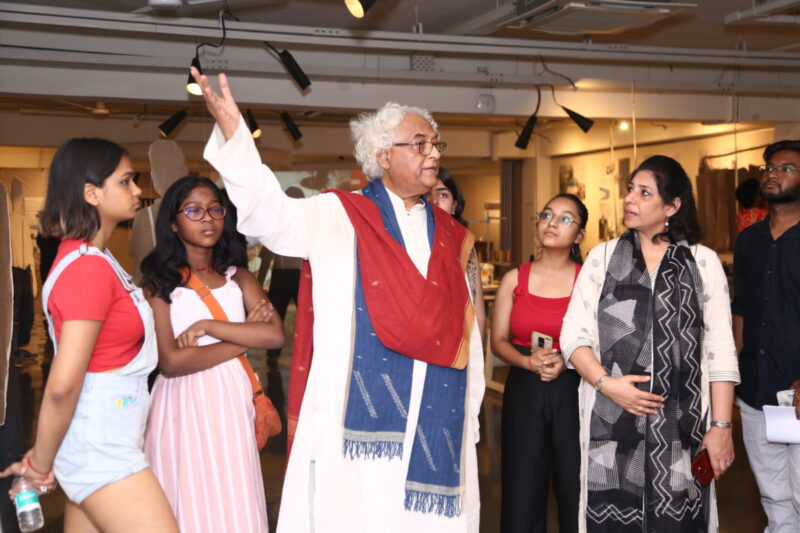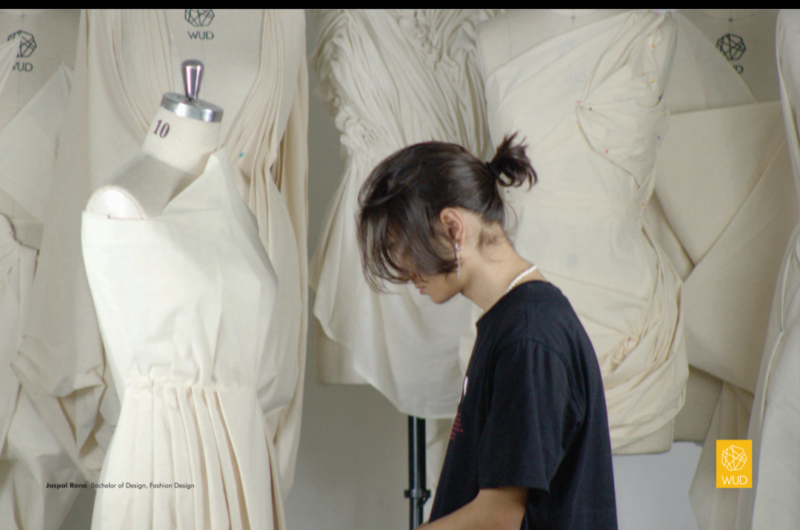When Antonio Maurizio Grioli, an Italian by heritage and England-educated, decided to join Pearl Academy as the Dean of the School of Fashion, he knew he would bring his global travels and research with him to the institution, which is known for its robust prowess in the burgeoning field of fashion.
After all, anyone who thought fashion is frivolous, is obviously wrong as the third richest person in the world after Elon Musk and Jeff Bezos, is Bernard Arnault, the Louis Vuitton Moet Hennessy chief, with a whopping $250 billion wealth, according to Forbes.
The hypothesis would be that fashion, or anything that has a creative zing to it, is the future, with not just metaverse, but leaps in technological advancements too.
The global revenue in the luxury fashion sector was US$111.50bn in 2023, and the market is expected to grow annually by 3.39% from 2023-2028 despite the pandemic, as trend pundits predict this sector is “inflation-proof”.
This has resulted in a shift from traditional professions — doctors, engineers and management professionals — to stylists, influencers, and designers as the latter are being offered lucrative packages.
Nandita Abraham, the former President of Pearl Academy, narrates an incident where an alumnus from the Pearl Academy batch of 2018 was sent to head the innovation centre of Accenture in Dublin, which was earlier managed by an engineer.
Design school’s speciality
Storytelling is the backbone of all fields, and undoubtedly that’s the specialisation of a design school. People spend money on functional design, whether it is clothes or furniture or even accessories, making designers crucial members of the problem-solving rubrics.

“They are now part of government panels for policy-making, as collaborations are the name of the game,” adds Nandita.
Pearl Academy began in 1993, with fashion design, fashion business and textiles, as the focus. Today it offers more than 40 courses — branding to business and marketing et al to equip students with a 360-degree view.
Prof. Meha Jayaswal, Associate Dean, Department of Fashion Communication & Fashion Business, Pearl Academy, Delhi, reiterates that the Indian design market is expected to grow at a Compound Annual Growth Rate (CAGR) of 23.6%.
So, from fashion design to fashion communication, graphics, film-making, game design and more, there are endless opportunities for those who are willing to put in the hard work and dedication.
“These careers are not only highly remunerative, but also offer long-term prospects for growth and success,” says Meha.
While Artificial Intelligence (AI) platforms have undoubtedly transformed the landscape of fashion communication, content will remain the king.
Graduates navigate this dynamic industry, learning a versatile skill-set that goes beyond traditional content writing. Mastery of content creation and communication, coupled with expertise in areas such as films, social media, graphics, photography and styling, event design and production, fashion shows, advertising and public relations are imparted.

“For every fashion designer who graduates, there is a need for at least three fashion communication graduates to build their brand identity,” she confirms.
Vogue and Elle India to global fashion retailers like Adidas, Nykaa, Accenture, Dentsu, and Gartner, fashion communication graduates are creating graphics, crafting copies, driving social media content and strategies for brands like Swiggy, Zepto, Miss Malini, Ramoji Film City, DK Publishing, Amazon, and more.
The National Institute of Fashion Technology Dean, Professor Sudha Dhingra who has been with the renowned institution since 1994, confirms how the industry has grown leaps and bounds with the biggest trend of corporates moving into this space. From Aditya Birla Fashion and Retail to Reliance, each one has adopted, grown and resuscitated several fashion designers’ businesses, giving them investment, strategy and commercialisation guidance.
Changing preferences

“Earlier parents would say, ‘you want to be a tailor?’ See the growth of Rahul Mishra at Paris Fashion Week, Sabyasachi Mukherjee reaching New York, the design world is exploding with opportunities,” she adds.
NIFT was guided by FIT New York. Sudha was also part of the contingent that studied a semester there learning draping, pattern cutting, and construction, when NIFT was founded in 1986.
As Pupul Jayakar told the then Prime Minister Indira Gandhi that design education is the future, with India boasting of rich artisanal techniques soaked in heritage and culture of crafts, the Ministry of Textiles took the lead.
“We encouraged students to spend time in textile clusters, and understood that in a developing country this move was imperative. With the inception of the Fashion Design Council of India and fashion weeks, this gave a further boost to designers who now had a platform to showcase their work,” says Sudha.
This intermingling of commerce, design and creativity, created a space for interesting placements of students.
Prof. Sudha further reiterates that the curriculum is changed every few years to incorporate the changing needs of the industry. The fashion world has altered its image from being an “exporters paradise” to being proudly “Made in India” and even though NIFT started with just fashion design, garment manufacturing technology to apparel merchandising and marketing, all these courses were later converted from diploma to degree.
“In 2018, we began the interdisciplinary minor module where you can select any skill — from photography, fashion communication, graphic design. Even if you are studying textiles, that gives every student a new pathway,” she adds.
Another new entrant in this space is the World University of Design, and the Vice-Chancellor, Dr Sanjay Gupta believes his institution is attempting to make design “mainstream”, since they started it in 2018.
They have over 1,000 students with 12 specialisations being offered in UG and PG from fashion design to fashion communication, graphics, gaming, and animation, in his new concept of “a university without walls”.
“Our first batch graduated last year. We believe digital skills are going to dominate this field in the future and that is where the focus is. If you are competent, you will get placed, there is no dearth of jobs in the fashion space,” says Gupta.
Associate Professor Rachna Imam, who has been teaching at Indian Institute of Art and Design (IIAD) founded in 2015 by Jitin Chadha, believes design was in a nascent stage in India, when she studied at NIFT, and “therefore it was difficult to convince my parents that it is a viable career”.

She had an honours degree in psychology from Delhi University which made them wonder why was she opting for a career in fashion design.
“After graduation, I found job options limited as the economy had not opened up by then. Fortunately for me, I had the great privilege of working with eminent designers and educators such as Martand Singh, Judy Frater, Rohit Khosla, Tarun Tahiliani,” she explains.
IIAD attracts companies like H&M, Shoppers Stop, Decathlon, Burberry, Coach, Anita Dongre and Sarita Handa among others.
“Design is branching out to newer applications and utilities. Areas such as interaction, transformation, service, and instructional design are establishing new paradigms. There is incorporation of user experience in design which involves competencies in marketing research, consumer behaviour, technology, anthropology, and psychology in the design process. Today, there are openings in UX (user experience) design, product, and graphic design. Digital creative directors are working for companies such as IBM, Microsoft, Apple etc. Design, I would say, is the future of education — the culture of learning by doing, combining knowledge, creativity, and critical thinking with the latest in technology and a digital mindset to solve problems of tomorrow,” concludes Rachna.





